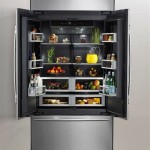Ideal Interior Humidity Level: Maintaining Comfort and Health
Maintaining the correct humidity level within a building is crucial for several factors, including occupant comfort, health, and the preservation of the building's structure and contents. Humidity, defined as the amount of water vapor present in the air, significantly impacts how individuals perceive temperature. Understanding the ideal interior humidity level and how to achieve and maintain it is therefore essential for creating a healthy and comfortable indoor environment.
The perception of temperature is directly linked to humidity. High humidity levels prevent sweat from evaporating efficiently, making individuals feel warmer than the actual air temperature. Conversely, excessively low humidity causes the air to feel cooler than it is because moisture evaporates quickly from the skin. This phenomenon, known as "relative humidity," is the measurement used to express the amount of moisture in the air compared to the maximum amount the air can hold at a specific temperature.
The ideal interior humidity level generally falls between 30% and 50%. This range supports human health, inhibits the growth of mold and allergens, and helps protect building materials. Deviations from this optimal range can lead to a variety of problems, affecting both the building and its occupants. The specific desired range can be influenced by external factors such as climate and the building's construction.
Health Implications of Improper Humidity Levels
Maintaining humidity within the recommended range is paramount for respiratory health. When humidity levels drop below 30%, the air becomes excessively dry. This dryness can lead to several uncomfortable and potentially harmful health issues. Dry air irritates the mucous membranes lining the nasal passages and throat, increasing susceptibility to viral and bacterial infections. The dryness can also exacerbate conditions like asthma and allergies, causing increased coughing, wheezing, and shortness of breath.
Furthermore, low humidity can lead to dry skin, itchy eyes, and chapped lips. It can also contribute to nosebleeds, particularly in individuals predisposed to this condition. Prolonged exposure to very dry air can weaken the body's natural defenses, making it more vulnerable to respiratory illnesses. Infants and the elderly are particularly susceptible to the negative health effects of low humidity due to their more sensitive respiratory systems and skin.
On the other hand, excessive humidity, above 50%, also poses health risks. High humidity creates an environment conducive to the growth of mold, mildew, and dust mites, all of which are common allergens. Mold spores become airborne and can trigger allergic reactions and asthma attacks in susceptible individuals. Symptoms of mold exposure can include sneezing, runny nose, itchy eyes, coughing, and skin rashes. In severe cases, prolonged exposure to mold can lead to more serious respiratory problems.
Dust mites thrive in humid environments, and their feces are a potent allergen. These microscopic creatures are commonly found in bedding, carpets, and upholstered furniture. High humidity allows them to proliferate, increasing the likelihood of allergic reactions. Controlling humidity levels is therefore a crucial component of allergy management. High humidity can also exacerbate existing skin conditions, such as eczema, making them more itchy and inflamed. It can also create a breeding ground for bacteria, potentially leading to skin infections.
Protecting Building Structures and Contents
In addition to health concerns, maintaining the proper humidity level is essential for preserving the structural integrity of a building and protecting its contents. Excessively high humidity can lead to condensation on surfaces, particularly in cooler areas like basements and bathrooms. This condensation can promote the growth of mold and mildew, which can damage building materials such as wood, drywall, and insulation. Mold growth can weaken structural components and require costly repairs. Furthermore, mold can stain surfaces and produce unpleasant odors.
High humidity can also cause wood to warp, swell, and rot. Wood floors, furniture, and trim are particularly vulnerable to damage from prolonged exposure to high humidity. Excess moisture can also damage fabrics, artwork, and books, leading to irreversible deterioration. Metal objects can corrode and rust in humid environments. Proper humidity control helps to prevent these types of damage and extend the lifespan of building materials and valuable possessions.
Conversely, excessively low humidity can also pose risks to building structures and contents. Dry air can cause wood to shrink and crack, leading to gaps in floors, walls, and furniture. It can also damage musical instruments made of wood, such as guitars and pianos, causing them to go out of tune or even crack. Antiques and other delicate items are also susceptible to damage from very dry air. By maintaining humidity within the recommended range, one can prevent these types of damage and preserve the value and appearance of the building and its contents.
Achieving and Maintaining Optimal Humidity Levels
Several methods can be employed to achieve and maintain the ideal interior humidity level. Dehumidifiers remove excess moisture from the air, which is particularly useful in damp climates or basements. These devices work by drawing air over cold coils, causing water vapor to condense and collect in a reservoir. Regular emptying of the reservoir is necessary for dehumidifiers to function effectively. Dehumidifiers are available in various sizes and capacities, allowing for selection of an appropriate unit based on the size of the space to be dehumidified.
Humidifiers, on the other hand, add moisture to the air, which is essential in dry climates or during winter months when heating systems tend to dry out the air. Humidifiers come in several types, including evaporative, ultrasonic, and steam humidifiers. Each type has its own advantages and disadvantages. Evaporative humidifiers use a wick or filter to absorb water and release it into the air as vapor. Ultrasonic humidifiers use high-frequency vibrations to create a fine mist. Steam humidifiers boil water and release steam into the air. Regular cleaning and maintenance are essential for all types of humidifiers to prevent the growth of bacteria and mold.
Air conditioners also play a role in humidity control. While air conditioners primarily cool the air, they also remove moisture as a byproduct of the cooling process. By keeping the air conditioner running, even on milder days, one can help to maintain a comfortable humidity level. Proper ventilation is also important for humidity control. Regularly opening windows and doors can help to circulate air and reduce humidity levels. Exhaust fans in bathrooms and kitchens help to remove moisture generated during showering and cooking. Ensuring adequate insulation in walls and ceilings can also help to prevent condensation and maintain stable humidity levels.
Monitoring humidity levels is crucial for effective humidity control. A hygrometer, also known as a humidity gauge, measures the amount of moisture in the air. Hygrometers are readily available and can be placed in various locations throughout the building to provide an accurate reading of humidity levels. Regular monitoring of humidity levels allows for timely adjustments to be made using dehumidifiers, humidifiers, or other methods, ensuring that humidity remains within the recommended range of 30% to 50%. Some thermostats also include built-in hygrometers, providing a convenient way to monitor both temperature and humidity levels.
Addressing sources of excess moisture is also crucial for maintaining optimal humidity levels. Leaky roofs, plumbing problems, and inadequate drainage can all contribute to high humidity. Identifying and repairing these issues is essential for preventing moisture buildup and maintaining a healthy indoor environment. Regularly inspecting the building for signs of water damage, such as stains or discoloration, can help to identify potential problems early on. Proper landscaping can also help to prevent moisture from entering the building. Ensuring that the ground slopes away from the foundation and that gutters and downspouts are properly functioning can help to direct water away from the building.

Relative Humidity Chart For Ideal In The House

Hot In Here The Best Humidity Level For Home Summer

Relative Humidity Chart For Ideal In The House

Ways To Manage Your Ideal Indoor Humidity Throughout The Year

What Is Considered High And Low Indoor Humidity

What Should The Humidity Level Be In My Home Powell Turner Heating Cooling Linthicum Maryland

Humidity Levels 101 Understanding In The Home St Louis Hvac Tips

Ideal Indoor Humidity On The Mark Heating And Air

Is This The Right Humidity Inside Home For Temperature Redflagdeals Com Forums

Humidity Health And The Sterling Chart Energy Vanguard








